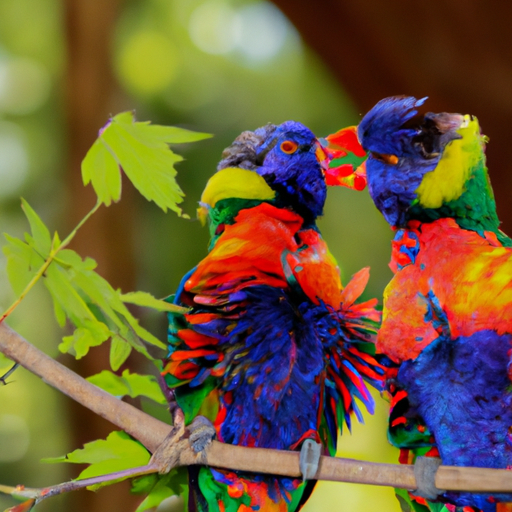 Introduction:
Introduction:
Love knows no bounds, and this is evident in the vast and diverse animal kingdom. While human society has long acknowledged and celebrated same-sex relationships, it may surprise some to learn that homosexuality is not exclusive to humans. Throughout the animal kingdom, numerous species have been documented engaging in same-sex relationships, challenging the traditional notions of heteronormativity. This article aims to shed light on the fascinating world of gay animals, exploring the reasons behind their behavior, the implications for their species, and the broader significance of these findings in our understanding of sexuality and social dynamics.
1. Understanding Homosexuality in Animals:
1.1 Definition and Prevalence:
Homosexuality in animals refers to same-sex sexual behavior, courtship rituals, or long-term pair bonding observed in various species. It is important to note that sexual orientation in animals, as in humans, is a continuum, with individuals exhibiting varying degrees of homosexual behavior, bisexuality, or exclusive heterosexuality. Although the prevalence of homosexuality varies across species, it has been observed in over 1,500 animal species, including mammals, birds, reptiles, amphibians, insects, and even fish.
1.2 Unraveling the Motivations:
The underlying reasons for homosexual behavior in animals remain a subject of scientific investigation. While it is challenging to discern the exact motives, researchers have proposed several theories. These include social bonding, dominance hierarchy, sexual exploration, mate availability, population control, and the absence of opposite-sex partners. By examining these theories alongside specific examples of homosexual behavior in various species, we can gain insight into the complexities of animal sexual behavior and the evolutionary advantages it may confer.
2. Prominent Examples of Homosexuality in Animals:
2.1 Mammals:
a. Bonobos: Known for their sexually liberated behavior, bonobos engage in both heterosexual and homosexual activities, using these interactions to diffuse tension, build social bonds, and establish hierarchy.
b. Dolphins: Male dolphins have been observed participating in same-sex alliances, often forming pairs or trios, which can last for years, potentially enhancing their survival and hunting success.
c. Lions: Male lions exhibit same-sex courtship, mounting, and even copulation, which can serve to strengthen bonds between coalition members and maintain social stability.
2.2 Birds:
a. Penguins: Male penguins, such as the famous chinstrap and Adélie penguins, often form long-term same-sex partnerships, engaging in intricate nest-building rituals and even adopting abandoned eggs or chicks.
b. Albatrosses: Some albatross pairs consist of two females or two males, successfully raising chicks together. These partnerships contribute to the overall reproductive success of the species.
2.3 Reptiles and Amphibians:
a. Lizards: Male lizards may display same-sex courtship behavior, such as mounting and aggressive displays, which may serve as a means of establishing social dominance or territory.
b. Frogs: Same-sex amplexus, a form of mating behavior in which one frog clasps another, has been observed in various frog species. While the reasons behind this behavior remain unclear, it may contribute to population regulation or social bonding.
3. Implications for Species and Evolution:
3.1 Biological Significance:
Homosexual behavior in animals challenges the idea that sexual behavior is solely reproductive. It highlights the complexity of sexual selection and suggests that social bonding, cooperation, and maintaining group dynamics are equally significant factors in evolutionary success.
3.2 Conservation and Species Survival:
Understanding same-sex behavior in animals can have important implications for conservation efforts. Recognizing the diversity of sexual behavior and the value of same-sex partnerships may lead to improved conservation strategies, ensuring the survival of endangered species.
4. The Broader Significance:
4.1 Shaping Attitudes:
Recognizing homosexuality in animals can help broaden societal attitudes toward diverse sexual orientations. By understanding that homosexuality is a natural and widespread phenomenon, we can challenge discriminatory beliefs and foster greater acceptance and equality.
4.2 Furthering Scientific Knowledge:
Exploring homosexuality in animals enhances our understanding of sexuality, evolution, and social dynamics. These findings contribute to ongoing research in fields such as ethology, evolutionary biology, and psychology.
Conclusion:
The existence of homosexuality in the animal kingdom offers a powerful testament to the diversity of sexual behavior across species. From bonobos to penguins, same-sex relationships can serve various functions, including social bonding, maintaining social stability, and contributing to the overall survival and reproductive success of the species. Understanding and appreciating the natural occurrence of homosexuality in animals has profound implications for our understanding of sexuality, evolution, conservation efforts, and the ongoing quest for equality and inclusivity in human society.
